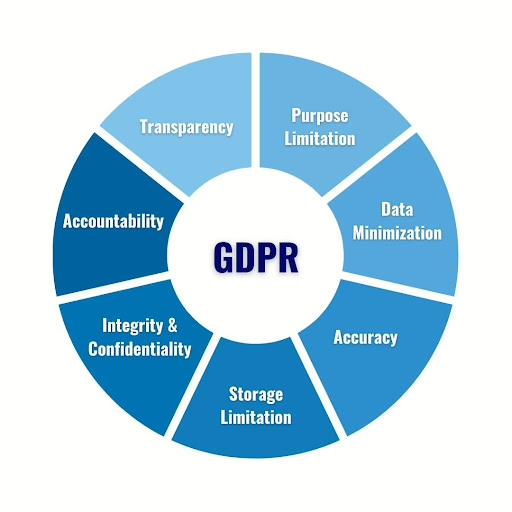Ensuring data privacy goes beyond being a legal obligation—it plays a vital role in delivering an excellent user experience (UX). With the implementation of the General Data Protection Regulation (GDPR), UX designers must rethink the ways they collect, store, and communicate user data. We, as UX designers, have the responsibility to make users feel informed, valued, and empowered.
This guide explains GDPR principles from a UX perspective, provides actionable steps for incorporating them into projects, and offers best practices that foster trust while ensuring compliance.
1. Understand What GDPR Means for UX
7 core GDPR principles:
Transparency | Purpose Limitation | Data Minimization | Accuracy | Storage Limitation | Integrity & Confidentiality | Accountability

GDPR influences design as much as it guides legal teams. It requires us to handle users’ data with clarity, honesty, and respect.
Key UX-related GDPR requirements:
- Ask for consent in a clear, specific, and informed way.
- Let users withdraw consent as easily as they give it.
- Design with privacy by design and privacy by default in mind.
- Allow users to view, update, or delete their personal data.
2. Craft Meaningful Consent — Not Manipulation
When requesting consent for emails or cookies:
Do:
- Use checkboxes or toggles with clear labels.
- Link to a plain-language privacy policy.
- Make choices easy to understand
Don’t:
- Pre-check options.
- Hide information.
- Use manipulative messages like “You’ll miss out if you say no.”
3. Be Transparent in Every Step
We don’t need to show a 12-page policy. We need to help users understand what data we collect and why.
Design Tips:
- Add just-in-time notices when asking for info (like location or phone).
- Use icons or highlights to explain what will be used.
- Let users manage settings easily from the dashboard.
4. Respect the Right to Be Forgotten
GDPR gives users the right to erase their data. We must make it easy.
What to include:
- A visible delete option in account settings.
- A confirmation screen showing what will happen.
- A message confirming successful deletion.
This shows we respect user control and build long-term trust.
5. Apply Privacy by Default
Privacy by default means we only collect what’s necessary—and only when needed.
Design guidelines:
- Disable tracking and optional data collection by default.
- Ask for permissions only when users perform related actions.
- Avoid permission overload. Start simple.
6. Test and Document Everything
GDPR compliance is a team effort between designers, developers, and legal.
Checklist for design teams:
- Create a GDPR checklist for each design sprint.
- Test how users interact with privacy-related UI.
- Keep a changelog of what user data you collect and why.
A checklist on one side, a team collaboration diagram on the other.
Result: Build Trust Through Design
When we design with transparency and control:
- Users know what’s happening with their data.
- They can choose how it’s used.
- They trust the product—and keep using it.
By making GDPR part of your design process, you protect both your users and your product.








